
The Dagwort Coombe Murder is a 1929 mystery detective novel by the Irish-born writer Lynn Brock. It was the first stand-alone novel by Brock following the success of his Golden age detective Colonel Gore. It was published in the United States with the alternative title The Stoke Silver Case.
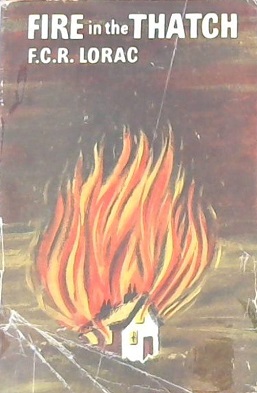
Fire in the Thatch is a 1946 detective novel by E.C.R. Lorac, the pen name of the British writer Edith Caroline Rivett. It is the twenty seventh in her long-running series featuring Chief Inspector MacDonald of Scotland Yard. Originally published by Collins Crime Club, it was reissued in 2018 by the British Library Publishing as part of a group of crime novels from the Golden Age of Detective Fiction.
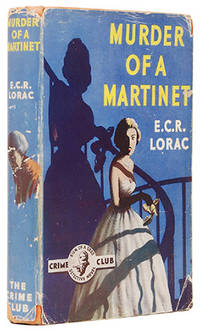
Murder of a Martinet is a 1951 detective novel by E.C.R. Lorac, the pen name of the British writer Edith Caroline Rivett. It is the thirty fifth in her long-running series featuring Chief Inspector MacDonald of Scotland Yard. It was published in the United States by Doubleday under the alternative title of I Could Murder Her.
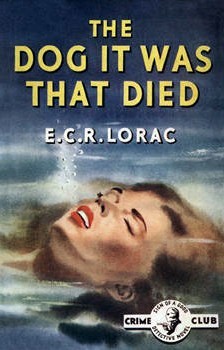
The Dog It Was That Died is a 1952 detective novel by E.C.R. Lorac, the pen name of the British writer Edith Caroline Rivett. It is the thirty sixth in her long-running series featuring Chief Inspector MacDonald of Scotland Yard, one of the more conventional detectives of the Golden Age of Detective Fiction. It was published by the Collins Crime Club.
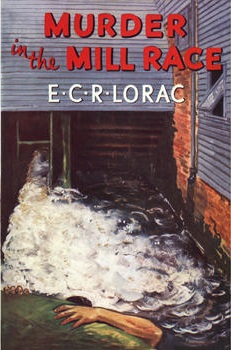
Murder in the Mill-Race is a 1952 detective novel by E.C.R. Lorac, the pen name of the British writer Edith Caroline Rivett. It is the thirty seventh in her long-running series featuring Chief Inspector MacDonald of Scotland Yard, one of the numerous detectives of the Golden Age of Detective Fiction. It was released in the United States under the alternative title Speak Justly of the Dead. Originally published by Collins Crime Club, it was reissued in 2019 by the British Library Publishing as part of a group of crime novels from the Golden Age of Detective Fiction.
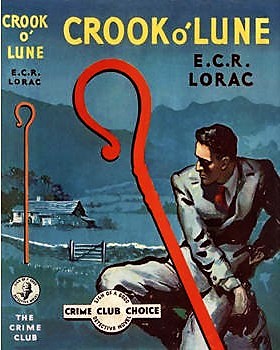
Crook O'Lune is a 1953 detective novel by E.C.R. Lorac, the pen name of the British writer Edith Caroline Rivett. It is the thirty eighth in her long-running series featuring Chief Inspector MacDonald of Scotland Yard, one of the more orthodox detectives of the Golden Age of Detective Fiction. It was published in the United States by Doubleday under the alternative title of Shepherd's Crook.
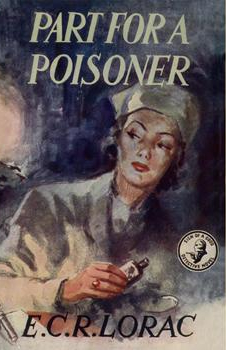
Part for a Poisoner is a 1948 detective novel by E.C.R. Lorac, the pen name of the British writer Edith Caroline Rivett. It is the thirty first in her long-running series featuring Chief Inspector MacDonald of Scotland Yard, one of the more conventional detectives of the Golden Age of Detective Fiction who relies on standard police procedure to solve his cases. It was published in the United States by Doubleday under the alternative title of Place for a Poisoner.

Death Before Dinner is a 1948 detective novel by E.C.R. Lorac, the pen name of the British writer Edith Caroline Rivett. It is the thirtieth in her long-running series featuring Chief Inspector MacDonald of Scotland Yard, one of the detectives of the Golden Age of Detective Fiction who relies on standard police procedure to solve his cases. It was published in the United States by Doubleday under the alternative title of A Screen for Murder.

Death at Dyke's Corner is a 1940 detective novel by E.C.R. Lorac, the pen name of the British writer Edith Caroline Rivett. It is the nineteenth in her long-running series featuring Chief Inspector MacDonald of Scotland Yard, a Golden Age detective who relies on standard police procedure to solve his cases.
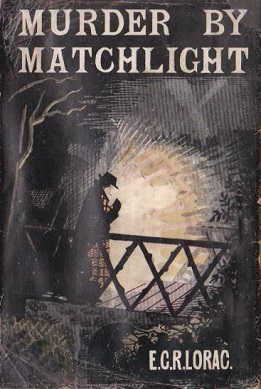
Murder by Matchlight is a 1945 detective novel by E.C.R. Lorac, the pen name of the British writer Edith Caroline Rivett. It was the twenty sixth novel of her long-running series featuring Chief Inspector MacDonald of Scotland Yard. Originally published by Collins Crime Club, it was reissued in 2018 by the British Library Publishing as part of a group of crime novels from the Golden Age of Detective Fiction.
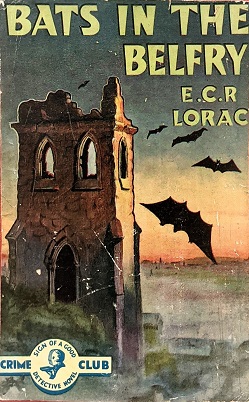
Bats in the Belfry is a 1937 detective novel by E.C.R. Lorac, the pen name of the British writer Edith Caroline Rivett. It is the thirteenth in her long-running series featuring Chief Inspector MacDonald of Scotland Yard, a Golden Age detective who relies on standard police procedure to solve his cases. Lorac wrote it in the summer of 1936 while staying with her mother at Westward Ho! in North Devon. Originally published by Collins Crime Club, it was reissued in 2018 by the British Library Publishing as part of a group of crime novels from the Golden Age of Detective Fiction.
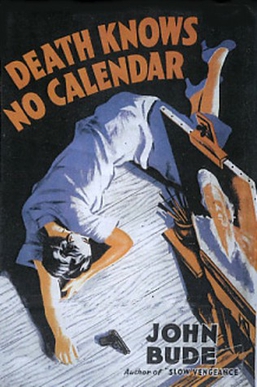
Death Knows No Calendar is a 1942 detective novel by the British writer John Bude. It was a stand-alone novel rather than one featuring his regular detective Superintendent Meredith. In this case the investigation is led by a former army officer Major Boddy. It takes the former of a locked room mystery with a closed circle of suspects, both popular variations of the genre during the period. Originally published by Cassell, in 2020 it was reissued by the British Library Publishing in a single edition with another Bude novel Death in White Pyjamas, as part of a series of republished crime novels from the Golden Age of Detective Fiction.

The Lake District Murder is a 1935 detective novel by the British writer John Bude. It is the first in a series of novels featuring Chief Inspector Meredith, promoted at the end of case to Superintendent. Set in the Lake District of Northern England, it shows the influence of Freeman Wills Crofts's Inspector French novels by featuring a detective who methodically breaks down the alibis of his suspects. In 2014 it was reissued by the British Library Publishing as part of a group of republished crime novels from the Golden Age of Detective Fiction.
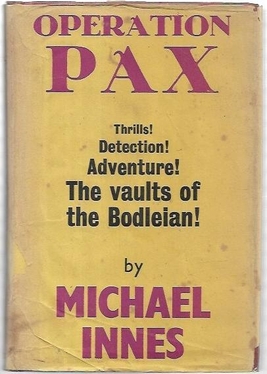
Operation Pax is a 1951 mystery thriller novel by the British writer Michael Innes. It is the twelfth entry in his series featuring John Appleby, a detective in the Metropolitan Police. The novel is thematically a thriller rather than the traditional Golden Age of Detective Fiction murder investigation that features in most of the series. As with other books in the series a farcical tone is often maintained. It was released in the United States under the alternative title The Paper Thunderbolt.
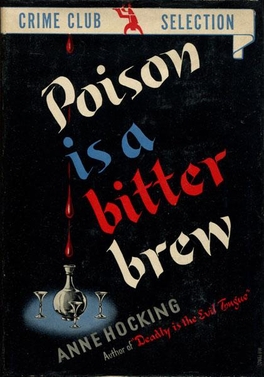
Miss Milverton is a 1941 mystery crime novel by the British author Anne Hocking. First published in London by Geoffrey Bles, it was the third in her series featuring Chief Inspector William Austen as part of the Golden Age of Detective Fiction. It was published in the United States in 1942 by Doubleday under the alternative title Poison is a Bitter Brew.

The Theft of the Iron Dogs is a 1946 mystery detective novel by E.C.R. Lorac, the pen name of the British writer Edith Caroline Rivett. It is the twenty eighth in her series featuring Chief Inspector MacDonald of Scotland Yard. Originally published by Collins Crime Club, it was reissued in 2023 by the British Library Publishing as part of a group of crime novels from the Golden Age of Detective Fiction. It was published in the United States in 1947 under the alternative title Murderer's Mistake. Like the earlier Fell Murder it is set in the rural Lunesdale area of Lancashire.
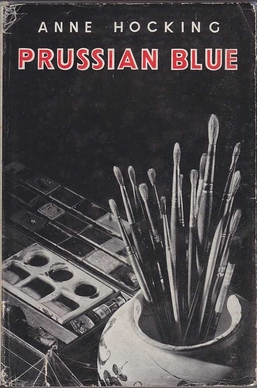
Prussian Blue is a 1947 mystery crime novel by the British writer Anne Hocking. It was her ninth in the series featuring Chief Superintendent William Austen of Scotland Yard. The title refers to Prussian Blue, a blue pigment used by artists. It was published in the United States by Doubleday under the alternative title The Finishing Touch.

The Vultures Gather is a 1945 mystery detective novel by the British writer Anne Hocking. It was published in London by Geoffrey Bles. Written during the Golden Age of Detective Fiction, it is the seventh in her series featuring Chief Superintendent William Austen of Scotland Yard.
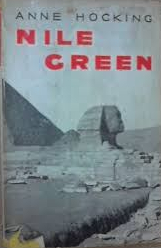
Nile Green is a 1943 mystery detective novel by the British writer Anne Hocking. Written during the Golden Age of Detective Fiction, it is the fifth in her long-running series featuring Chief Superintendent William Austen of Scotland Yard. It was published in the United States by Doubleday under the alternative title Death Loves a Shining Mark.

Death Disturbs Mr. Jefferson is a 1950 mystery detective novel by the British writer Anne Hocking. It was the eleventh entry in her series featuring Chief Inspector William Austen of Scotland Yard, one of the many investigators during the Golden Age of Detective Fiction.It was published in the United States by Doubleday.




















